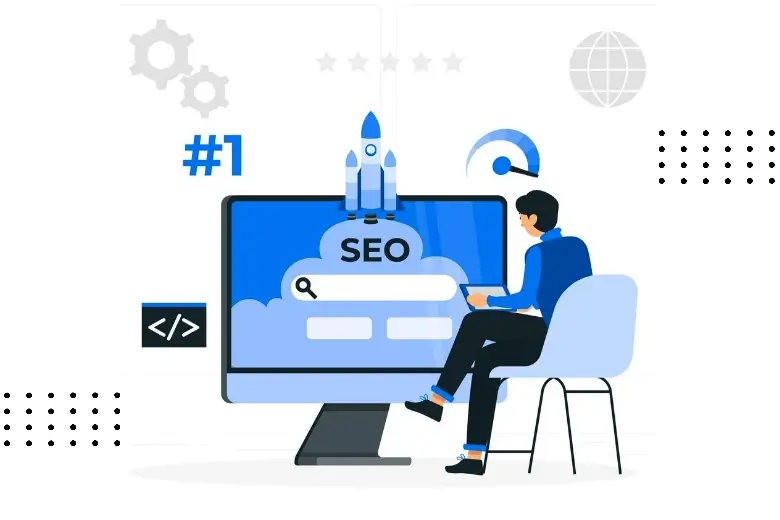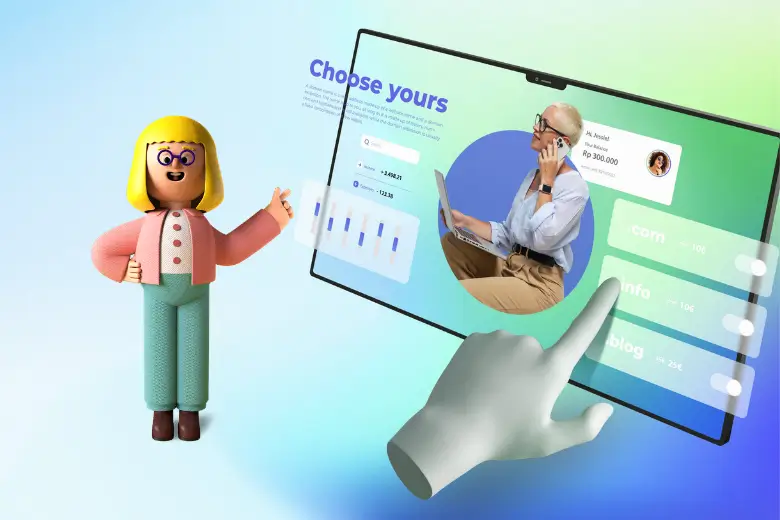Table of Contents
ToggleWhat is E-Commerce?
Lifestyle and business have transformed on a large scale in the past decade, and the market has majorly shifted from offline to online arenas. The Internet has now become fast and affordable, and everything is available at your doorstep. Businesses have taken advantage of this and have started setting up online stores via websites and social media platforms. This entire process of buying and selling online is what we call E-commerce. Your website is your store, and your landing pages act as your storefront.
While trying to make their mark in the E-commerce arena, businesses face a lot of competition because a lot of brands have started leveraging the internet for wider brand recognition/sales. This is where E-Commerce marketing comes into action. E-commerce marketing strategies involve everything and anything you can do ( in a legal and internet-friendly way ) to get your storefront to your target audience and get them to buy from you!
Let us look at some E-commerce marketing strategies that would help you take your online business to the next level
1. Content Marketing

Since the dawn of Digital marketing, there has been a saying, “Content is King”. Remarkably enough, this saying is still relevant in 2024 and will remain relevant for times to come. Content like blogs, articles, case studies, etc are undoubtedly the biggest traffic magnets to your website. Staying constantly active with your blog posts will help you attract new audiences. The value that content adds to the user experience gets your audience to come back to your website now and then. Using content to divert traffic to your storefront is a practice that establishes credibility for your brand and also generates quality leads.
A concrete content marketing strategy begins with proper keyword research. The aim of your content should be to attract your audience and keep them engaged enough to perform whatever action you want them to perform on your website.
2. Search Engine Optimisation

When you are running a website, no matter what your target is, whether it is E-commerce or gaining audience and readership, everything that you do has to be optimised for search engines. The biggest source of visitors to your website is Search Engines. When optimised for search engines and indexed, the pages in your website will be crawled by search engines like Google, Bing, and Yahoo and serve as results for relevant search queries. SEO (Search Engine Optimisation ) is the process of optimising your website according to the best practices of these search engines, which will further help you gain the audience for relevant search queries and aid in converting them to valuable customers.
Some basic steps that you should not miss out on are:
- Optimising Images the best practices ( Size and type )
- Keyword Research
- Optimising pages (Homepage, landing pages, etc ) with keywords
- Publish blogs, articles, and case studies with suitable keywords.
- Gain backlinks
Website optimisation with SEO best practices is one of the most imperative digital marketing and Ecommerce strategies. The above examples are just some of the basic things that should be kept in mind for a website to gain the audience that it needs.
3. Email Marketing

Email marketing is one of the most powerful direct marketing channels that you can come across while personalising your message to your target audience. As a direct and personalised message to your potential customer, email marketing can generate high revenues.
Email marketing generally consists of offers, updates, and details about new products you want to share with a potential customer. Your Email copy should be crisp and to the point with a suave subject line. It becomes interactive and visually pleasing if you add some graphic components to the mail. Also, one thing that should be made sure of while drafting a mail copy is that it should include a clear and discernible CTA for interested customers to proceed to the landing page.
This channel is one of the most powerful tools in your arsenal that will help your E-commerce marketing gain the boost it needs.
4. Social Media Marketing

With a user base of hundreds of millions, the power of social media stands unfathomable. What are the odds that you will find a massive chunk of your target audience in clusters and can insert your brand into their daily lives? Social Media makes this feat possible. A lot of businesses have started to use Social Media marketing as a strategy to reach out to millions of social media users.
With the number of users surmounting to 2.9 Billion and 2 Billion, Facebook and Instagram are the two largest social media platforms respectively. Advertising the offers, details and updates of your business over social media helps your business reach out to the potential millions of customers. Social media allows you to inject your business into the lives of the users seamlessly and can get you a tremendous ROI.
5. Search Engine Marketing

When trying to reach out to your target audience through your website, ranking in SERPs ( Search Engine Result Pages ) is a very important factor in driving results to your E-Commerce marketing efforts. Just like you, a lot of your competitors are optimising their websites with keywords and SEO best practices to rank higher on the results page. Sometimes amidst a lot of competition, the visibility of your site in SERPs gets affected. This is where SEM ( search engine marketing ) comes into action.
SEM is the process of improving the visibility of your website by investing in paid advertisements on search engines. This involves using tools like Google Adwords and bidding on keywords to gain the top positions for the keywords that are relevant to you.
6. Listing in Local Directories

One of the biggest potential customer pools is the local area of your business location. Using geo-targeting keywords is indeed a good way to attract a local audience to your website, but listing it in local directories can take it a notch above in terms of discovery by local customers. Some of the biggest examples of local directories are Google My Business, Bing Places, Yelp, Yellow Pages, etc, which are equipped to help your business get discovered by the local audience of the area where you are registered. When listed with these directories, for example, let’s say, in the case of Google My Business, your business automatically pops up as a key point in Google Maps, hence getting more audience.
7. Influencer Marketing

Fame has its benefits, and now, with the advent of social media, brands and businesses have started to make use of the fame and audience of influencers through collaborations with them. Collaborating with influencers helps you to tap into the endless potential of their audience and a corroboration coming from their favourite public figure adds the cherry on top for your brand advocacy.
Influencer marketing can go about in multiple modes starting from barter to monetary compensation. A lot of brands send their products to an influencer free of any cost in return for their advocacy to their audience. Some influencers do charge monetary compensation to advocate for brands to their followers. Getting influencers to portray brands has boosted the E-commerce marketing efforts for many businesses.
8. Landing Page Optimisation

A landing page is where you want your target audience to be when they enter your website. It might be a product page or your services page. Whichever section of your website you want your audience to “LAND” on is your landing page. When a potential customer is on your landing page, you want to provide them with everything that they require to complete an action/transaction. A major part of your E-commerce marketing strategy is optimising your landing page. Your landing page should be well equipped with clear and discernable CTAs, product details, payment methods, attractive graphics and every bit of information that might sway the minds of an audience and convert them into customers.
Optimising your landing page with best SEO practices also helps it rank on search engines for relevant search queries.
9. Mobile Responsive Site

Since the advent of Android phones, everything is on the go. Apps like Amazon and Flipkart have taken online shopping to a whole new arena. Since the ease of access to shopping has been simplified to this level, it is imperative that you have a mobile version of your website. It is one of the main checkboxes of E-commerce marketing strategies.
Not having a mobile responsive site is also a very big red flag for Google Search Console. Also, do make sure that the CTAs and the graphics you use are optimised to fit the mobile screen.
10. User Generated Content

Your business, be it product-based or service-based, needs advocacy from people who have already bought your product / availed your service. User-generated content such as reviews, unboxing videos, and testimonials serve as a means to let your potential customers know of your authenticity, building trust and credibility in the long run.
User Generated Content also helps you expand your customer pool, as people might discover your business for the first time through user-generated content.
E-commerce is a rising arena, and every step you take to enhance it is crucial. At Digital Ninja, we help you strategise your marketing efforts and help you gain an enhanced ROI.
Follow us on Facebook and Instagram for updates
